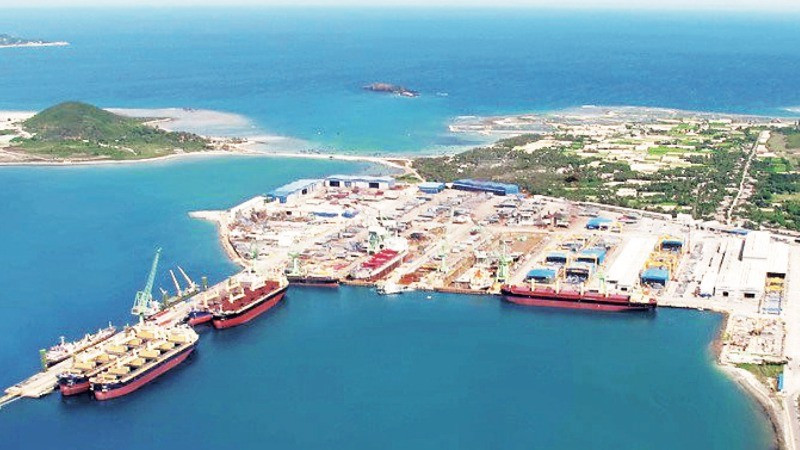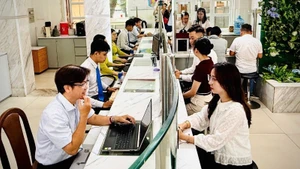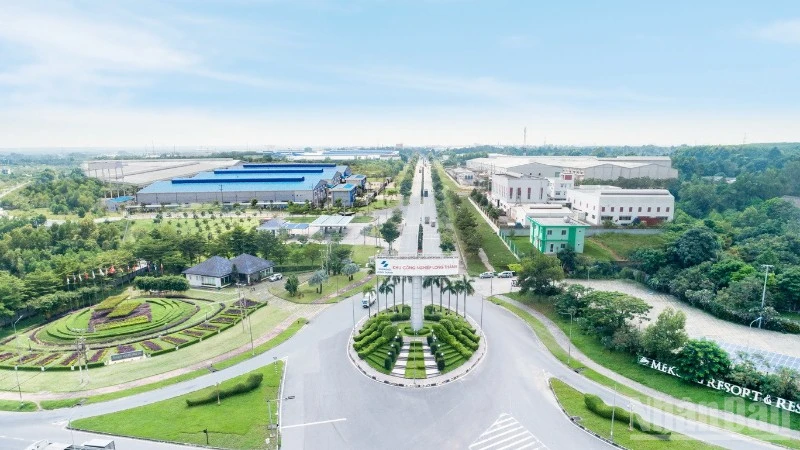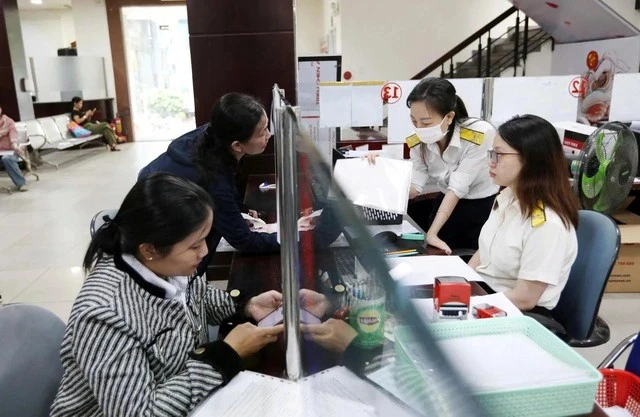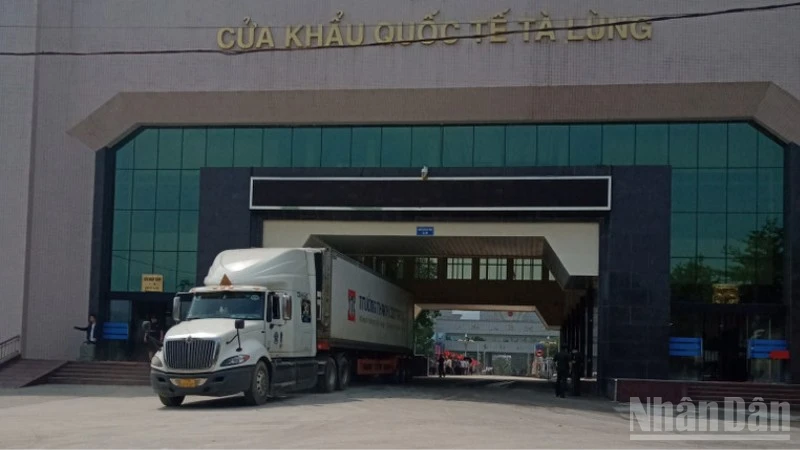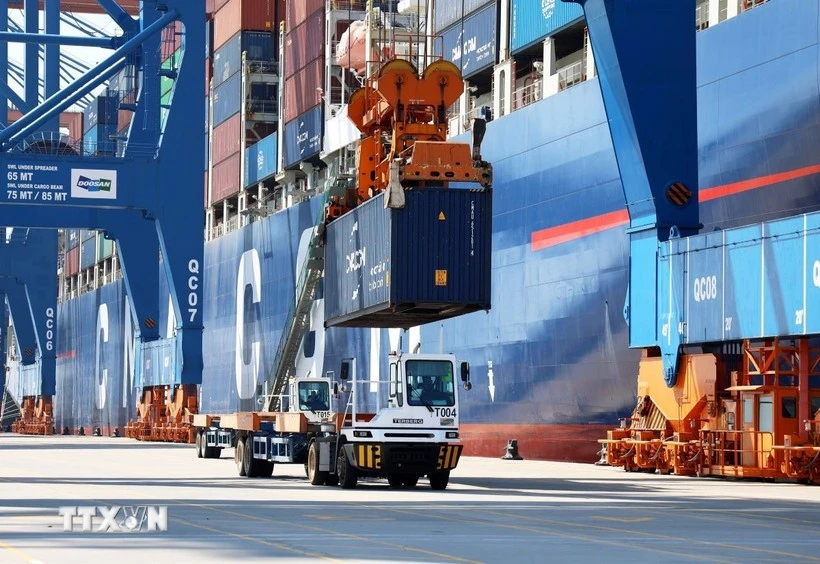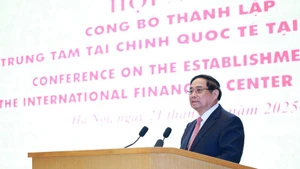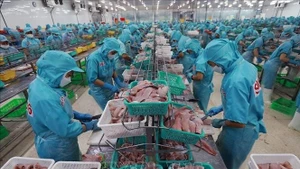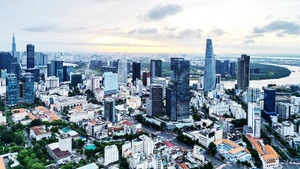Khanh Hoa enjoys a favourable geographical location, natural conditions, a mild climate, and a unique cultural identity as the land of agarwood mountains and salangane nests by the sea. Both domestic and international economic experts affirm that Khanh Hoa holds tremendous and distinctive potential for developing a marine economy along with green and sustainable tourism.
Strong economic recovery
Looking back a decade, in 2015, Khanh Hoa recorded a GRDP growth rate of 9.76%. The Resolution of the 17th Provincial Party Congress set a of an average annual growth rate of 7.5–8% target for the 2015–2020 period. However, the achieved result was only 6.1%.
Nguyen Tan Tuan, Chairman of Khanh Hoa Provincial People's Committee, recalls that in 2020, Khanh Hoa's economy experienced negative growth for the first time, at -10.5%, ranking among the provinces with the deepest negative growth nationwide. The province implemented numerous drastic measures with the “dual goal” of fighting Covid-19 while maintaining economic development, yet in 2021 the growth rate was still negative at -5.58%. However, with the involvement of the entire political system, the people and the business community, Khanh Hoa’s economy bounced back strongly.
From two consecutive years of negative growth, in 2022 Khanh Hoa’s economy made a remarkable breakthrough with a GRDP growth rate of 20.7%, the highest in the country.
From two consecutive years of negative growth, in 2022 Khanh Hoa’s economy made a remarkable breakthrough with a GRDP growth rate of 20.7%, the highest in the country. Riding that momentum, in 2023, the province’s GRDP increased by 10.35%, ranking fourth nationally and leading the North Central and Central Coastal region. In 2024, the GRDP rose by 10.16%, placing seventh in the country. This marked the third consecutive year in which Khanh Hoa achieved GRDP growth above 10%, maintaining its position among the provinces with the highest economic growth nationwide.
According to the Khanh Hoa Provincial People's Committee, exports and tourism are currently the fastest-growing sectors. In 2024, for the first time, the province's export turnover reached USD 2 billion. Alongside traditional sectors like shipbuilding and fisheries, new export markets are gradually opening for products such as bird’s nest and durian.
With its infrastructure and the emergence of super-urban models, Cam Ranh has become a top destination for short-term travel and second-home tourism.
Also in 2024, Khanh Hoa welcomed over 10.6 million tourists, up 45.5%, including more than 4.5 million international visitors, a rise of 89.3%. Tourism growth exceeded the plan by more than 53%, with revenue reaching over VND 52 trillion. Over the past decade, Khanh Hoa has maintained relatively high growth rates, its economic structure has shifted positively, and state budget revenue as well as per capita income have steadily increased.
Recognising Khanh Hoa’s important role in the development of the South Central and Central Highlands regions and the entire country, the Politburo issued Resolution No. 09-NQ/TW on building and developing Khanh Hoa Province to 2030, with a vision to 2045, and the National Assembly issued Resolution No. 55/2022/QH15 on piloting several special mechanisms and policies for the province’s development. These two resolutions have opened promising new development directions for Khanh Hoa.
Chairman Nguyen Tan Tuan shared: “There are so many tasks to do, and each of them is major, urgent and critical. That’s why we are racing against time. Officials and civil servants must work at double or triple their normal capacity; on one hand, they must focus on reviving production, restoring the economy, and stabilising people’s livelihoods post-Covid-19, while on the other, they must complete the steps needed to effectively implement the two significant resolutions with many incentives granted by the Central Government to Khanh Hoa.”
Leveraging Potential and Strengths
According to Secretary of the Provincial Party Committee Nghiem Xuan Thanh, Khanh Hoa aims for a GRDP growth rate of 10.5% in 2025 and 11–11.5% for the 2026–2030 period. To achieve these targets, the province is prioritising economic growth; accelerating the restructuring of economic sectors aligned with renewing the growth model; and enhancing productivity, quality, efficiency, competitiveness, autonomy, adaptability, and economic resilience. It also aims to speed up the disbursement of public investment capital, targeting an annual disbursement rate of over 95% of the plan.
To establish a solid foundation for the next development phase, the province has completed major zoning plans, opening space for key projects to attract investment in the near future. Recently, the province has engaged and attracted several strategic investors to implement these plans, contributing significantly to economic growth, job creation, and increased budget revenue. With substantial resources from the central government and local budgets, Khanh Hoa is synchronously implementing numerous vital infrastructure projects, especially transport infrastructure, paving the way for new development opportunities.
Looking to long-term development, Khanh Hoa is formulating an economic development strategy with high growth rates; completing zoning plans to attract investment; and promoting investment, particularly targeting strategic investors from Japan, South Korea, the United States and Europe to develop environmentally friendly projects that increase production value while supporting tourism development.
Quang Nam provincial leaders inspect the construction progress of coastal projects in Quang Nam Province.
In 2025 alone, the province will establish and issue monthly and quarterly economic growth scenarios and assign specific responsibilities to departments and agencies for implementation, monitoring, and evaluation. The Provincial Party Standing Committee has approved and assigned 50 breakthrough tasks across various fields: Party and government building; organisation and personnel; resolving backlogged projects; developing agriculture, industry, urban areas, tourism, and transport; and implementing planning, science and technology, digital transformation, and social work. Each task must meet five clear criteria: clear person, clear task, clear timeline, clear responsibility, and clear result. The performance of these tasks in 2025 will be an important criterion in assessing and ranking officials and public servants holding leadership and management positions.
Khanh Hoa is facing great opportunities and fortunes in the new development stage.
Secretary of Khanh Hoa Provincial Party Committee Nghiem Xuan Thanh
According to Secretary Nghiem Xuan Thanh, Khanh Hoa is facing historic opportunities in this new development phase. However, the province also acknowledges two major bottlenecks and challenges that need to be urgently addressed: the quality of human resources, and difficulties in unlocking development resources. Success requires specific mechanisms, strong determination, and great efforts.
Khanh Hoa is actively implementing the Politburo’s policy of streamlining the organisational structure in association with restructuring and enhancing the quality of human resources, thereby improving the efficiency and effectiveness of the administrative apparatus. In the short term, the province will finalise its Job Position Scheme and develop a toolkit to measure and evaluate the productivity, quality, and performance of civil servants, which is expected to be implemented from the second quarter of 2025. In terms of unlocking development resources, the province is focusing on the removal of institutional and policy obstacles to quickly put long-delayed projects into operation, thus improving investment efficiency, creating jobs, and increasing state revenue.
“We are standing before great potential and opportunities. If we lack clean land, or do not resolve procedural issues quickly, all these potentials and opportunities will slip away. We must enhance collaboration with investors to accelerate administrative procedures and properly conduct land compensation, support, resettlement, and recovery. This must comply with the law while ensuring feasibility and progress. At the same time, we must attract and select investors capable of transforming the province’s economic and social development,” said Secretary Nghiem Xuan Thanh.
